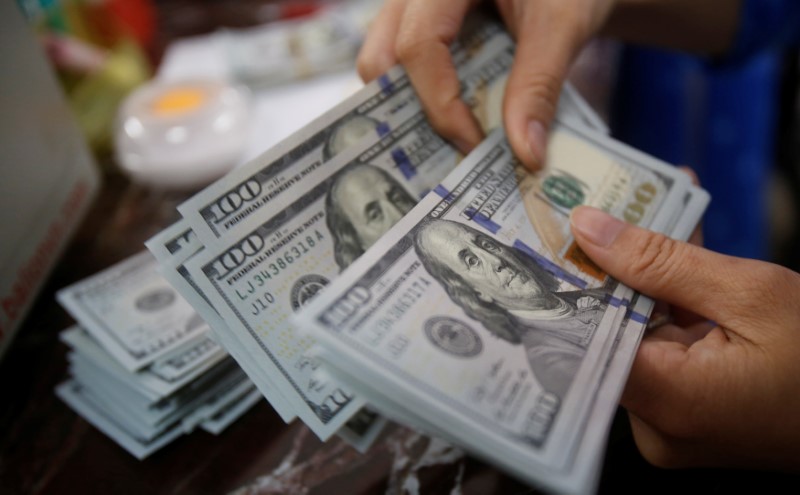Investing.com - The dollar rose against a basket of the other major currencies on Friday after data showing that the U.S. economy created jobs at a robust pace last month supported expectations for a third hike by the Federal Reserve this year.
The U.S. dollar index, which measures the greenback’s strength against a trade-weighted basket of six major currencies, was up 0.21% to 95.78 late Friday.
The U.S. economy added 222,000 jobs last month the Labor Department reported, more than the 179,000 new jobs expected by economists.
Figures for April and May were also revised to show that 47,000 more jobs were created than previously reported.
The unemployment rate ticked up to 4.4% from a 16-year low of 4.3% in May, as more people looked for work, a sign of confidence in the labor market.
But wage growth continued to lag, with wage inflation growing by an annualized 2.5% in June, below forecasts for 2.6%.
The dollar initially fell against the yen amid concerns over the inflation implications of the weak wage growth data, before rebounding amid optimism over the strong headline number.
The rapid pace of jobs growth reassured investors that the economy is on a strong enough footing to justify the Fed’s plans to raise interest rates once more this year.
The Fed hiked rates at its June meeting and stuck to its forecast for one more rate hike this year, but the subdued inflation outlook has raised doubts over whether officials will be able to stick to their planned tightening path.
USD/JPY touched a low of 113.11 before rebounding to 113.90 in late trade.
The euro was lower against the dollar following the jobs report, with EUR/USD slipping 0.21% to 1.1398.
Sterling slumped to a one-week low, with GBP/USD down 0.61% to 1.2890.
Meanwhile, the Canadian dollar rose to 10-month highs with USD/CAD down 0.79% to 1.2874 late Friday after stronger-than-forecast Canadian jobs data bolstered chances for a rate hike by the country’s central bank this week.
In the week ahead, investors will be focusing on Fed Chair Janet Yellen's testimony on monetary policy as well as U.S. data on inflation and retail sales, due out on Friday.
The latest UK jobs report and the Bank of Canada’s meeting, both set for Wednesday, will also be closely watched.
Ahead of the coming week, Investing.com has compiled a list of these and other significant events likely to affect the markets.
Monday, July 10
China is to release data on consumer and producer price inflation.
In the euro zone, Germany is to report on its trade balance.
Tuesday, July 11
Australia is to release private sector data on business confidence.
Bank of England Deputy Governor Ben Broadbent is to speak at an event in Scotland.
Canada is to publish data on housing starts.
In the U.S., Fed Governor Lael Brainard is to speak at an event in New York.
Wednesday, July 12
The UK is to publish its monthly employment report.
The Bank of Canada is to announce its benchmark interest rate and publish a rate statement which outlines economic conditions and the factors affecting the monetary policy decision. The bank will also hold a press conference.
Fed Chair Janet Yellen is to testify on the monetary policy report before the House Financial Services Committee, in Washington.
Thursday, July 13
China is to publish data on the trade balance.
The U.S. is to release data on producer prices and jobless claims.
Janet Yellen is to testify on the monetary policy report before the Senate Banking Committee, in Washington.
Chicago Fed President Charles Evans is to speak at an event in Idaho, while Fed Governor Lael Brainard is due to speak at an event in Massachusetts.
Friday, July 14
The U.S. is to round up the week with a raft of economic reports including figures on inflation, retail sales, industrial production and consumer sentiment.
Dallas Fed President Robert Kaplan is to speak at an event in Mexico City.
